Blog • Published on:August 11, 2025 | Updated on:September 18, 2025 • 21 Min
Malta Residency and Lifestyle Guide for American Citizens
For Americans who want to live in Europe without facing a language barrier, Malta is one of the few options where English is an official language and used in everyday life, from government offices to grocery store labels.
On top of that, Malta offers the full rights and mobility of an EU country, which means once you’re a resident, you can travel freely across the Schengen Zone.
The island’s location in the central Mediterranean gives you quick flight connections to mainland Europe, North Africa, and the Middle East. Despite its small size, Malta’s economy is stable, with strong sectors in financial services, gaming, tourism, and tech.
The country also ranks high for safety, healthcare quality, and political stability, which is why it’s been drawing not just retirees but also remote workers and entrepreneurs from the U.S.
This guide breaks down exactly how Americans can move to Malta in 2025, the residency options available, living costs, and what to expect day to day once you’re there.
Why Choose Malta as an American Expat
1. A Significant and Growing Expat Community
By end of 2024, Malta’s foreign-born population reached 173,700, or nearly one-third of the nation’s total, a clear sign of the island’s growing appeal.
2. English-Speaking, EU Membership, and Mobility
English is an official language and widely used in government, schools, and business. About 88% of the population speaks English, though only 10% use it as their first language.
Malta is an EU Member State, giving residents the ability to live, work, study, and access healthcare across 27 countries, depending on residency status.
3. Strategic Location and Stable Economy
Positioned in the heart of the Mediterranean, Malta sits between Europe, North Africa, and the Middle East. It boasts a developed open market economy, multilingual workforce, competitive corporate taxation, and strong finance and ICT sectors.
GDP per capita (PPP) is around $45,730 USD, with low unemployment historically.
4. Quality of Life: Climate, Safety, and Healthcare
Sunny and mild climate: Malta gets about 3,000 hours of sunshine annually, average temperatures range from 10 °C (winter) to 34 °C (summer), and swimming season lasts from May to December.
The island is consistently rated for its low crime rates and political stability.
Healthcare: Public medical care is free at point of delivery, and Mater Dei is among Europe’s largest hospital complexes. Private insurance is recommended for expats.
5. Streamlined Residency and Citizenship Pathways
The most popular routes for U.S. citizens include the Malta Permanent Residence Programme (MPRP) and the Nomad Residence Permit.
Malta Immigration Requirements for US Citizens
Passport and Basic Documentation
As a U.S. citizen, you can enter Malta, or any Schengen country, visa-free for up to 90 days within any 180‑day window under Schengen rules.
If you're planning a longer stay, not only past that 90-day period, you’ll need to apply for a residency permit tailored to your situation.
Visa Types and Eligibility
Here are a few of the most relevant visa/residency programs:
Global Residence Programme (GRP)
You can qualify by purchasing or renting property, minimum €275,000 if buying (or €220,000 in certain areas), or about €9,600/year in rent. You must also show financial self-sufficiency and valid health insurance.
Malta Permanent Residence Programme (MPRP)
This is a residency-by-investment path that grants permanent residency in return for investments and contributions.
Processing typically takes 4–6 months from a complete application. Requirements usually include property purchase or rental, a government contribution, administrative fees, and a small donation.
Nomad Residence Permit
Malta offers a digital nomad visa for remote workers, great for entrepreneurs or freelancers.
Residency Permit Process
Here’s how the process typically unfolds:
- Pre‑application setup — This involves due diligence checks, preparing documents, proving funds, and securing property.
- Application submission — Submit your dossier with required fees; after that, processing usually takes 4–6 months for MPRP.
- Biometrics and approval — Once approved, you'll go through fingerprinting and receive your residency card.
- Validity and renewal — The residency card is often valid for 5 years and can be renewed if you meet ongoing conditions.
Malta Visa Options for Americans
As a U.S. citizen, you have several legal pathways to live in Malta beyond the 90-day Schengen visa-free allowance. Which route is right for you depends on your purpose for moving, whether it’s long-term work, retirement, investment, or remote work.
The MPRP is Malta’s main residency-by-investment route for non-EU nationals, including Americans.
It grants permanent residency rights to you and your family, allowing you to live in Malta indefinitely and travel visa-free within the Schengen Zone for up to 90 days every 180 days.
Eligibility Requirements:
- Property: Buy residential property worth at least €375,000 or rent at €14,000/year for five years.
- Wealth threshold: Minimum capital of €500,000, with at least €150,000 in financial assets (cash, stocks, bonds) or value of €650,000, with at least €75,000 in financial assets .
- Contributions and fees:
- Government contribution: €37,000 i.
- Non-refundable administrative fee: €60,000.
- Donation: Minimum €2,000 to a Maltese NGO.
- Other requirements: Health insurance covering all EU countries, clean criminal record, due diligence approval.
Processing Time: Usually 3–4 months from submission of a complete application.
Key Benefits:
- Renewable 5-year residency card with indefinite rights to remain in Malta.
- Ability to include spouse, dependent children, and dependent parents/grandparents.
- No minimum physical stay requirement, although you must maintain the property commitment and meet renewal conditions.
2. Malta Global Residence Programme (GRP)
A more flexible option for those with stable income and no need for permanent status immediately.
The GRP is aimed at economically self-sufficient individuals who want tax residency without full permanent residence.
Read more about the program here.
If you work remotely for a company outside Malta or run your own online business, this permit is a short- to medium-term solution.
Requirements:
- Proof of remote work — either employment contract, business ownership documents, or freelance agreements.
- Minimum gross annual income of around €42,000 Lease or purchase agreement for accommodation in Malta.
- Comprehensive health insurance.
Validity: 1 year, renewable for up to 3 years.
All about Malta’s Digital Nomad Visa, its requirements, lifestyle, costs, and legal steps for Americans in our blog.
4. Employment & Work Permits
If you secure a job with a Maltese employer, you can apply for a work visa (Single Permit). Your employer usually sponsors the application.
Requirements:
- Job offer from a licensed Maltese company.
- Proof of qualifications/experience.
- Health insurance and clean criminal record.
Processing Time: 2–3 months.
Designed for pensioners and retirees from outside the EU:
- Pension income must make up at least 75% of total income.
- Property purchase (€275,000+) or rental (€9,600/year).
- Spend at least 90 days/year in Malta.
Cost of Living: Malta vs United States
Overall Comparison
- Daily life in Malta tends to be around 22–31 % cheaper than in the U.S., depending on whether rent is included.
- A broad-based cost-of-living index shows the U.S. is about 87 % more expensive than the baseline, illustrating Malta’s relative affordability.
Housing
- Renting a one-bedroom apartment in central areas of Malta typically runs between €900–€1,400/month, with more affordable options (€700–€1,100) available outside the center.
- In contrast, comparable U.S. rentals cost around 53 % more.
Utilities & Internet
- Basic utilities (electricity, water, heating, etc.) for a modest-sized apartment in Malta cost about €80–€180/month, depending on usage and property type.
- Internet access averages around €20–€35/month.
- In the U.S., these combined expenses typically run 100+ % higher.
Groceries & Dining
- Monthly grocery costs for a single person in Malta are roughly €200–€320, depending on eating habits.
- Overall, groceries in Malta are about 33 % cheaper than in the U.S.
- Dining out is also less expensive—think €15 for an inexpensive meal, compared to $18–19 in the U.S.
Transportation
- Public transit in Malta is inexpensive—bus fares are low, and monthly passes are much cheaper than in U.S. cities.
- Fuel, however, is pricier—gasoline costs more in Malta than in the U.S.
Healthcare & Insurance
- Maltese residents benefit from free or low-cost public healthcare; some expats may opt for private insurance, which can cost around €50/month.
- In the U.S., health insurance rarely comes cheap, often hundreds of euros/dollars per month.
Lifestyle & Extras
- Gym memberships in Malta are around €50/month, a fair trade-off compared to many U.S. cities.
- Overall, a single person can expect a comfortable lifestyle, covering rent, utilities, groceries, transit, and a bit of leisure, for about €1,500–€1,600/month (roughly $1,800–$1,900).
Best Areas to Live in Malta
Although Malta is small enough to cross by car in under an hour, where you choose to live will shape your daily life, how much you spend on rent, how quickly you can get to work, and whether you spend your evenings in a quiet village café or at a busy waterfront bar.
For Americans moving here, these are the areas that tend to stand out the most.
Sliema – Urban Convenience by the Sea
Sliema is Malta’s main commercial and residential hub for professionals and established expats. It’s set right on the coast with a long promenade, high-end shopping centers, and a ferry link to Valletta.
- Lifestyle: Best suited for those who want easy access to cafés, co-working spaces, gyms, and shopping without relying on a car. The area is walkable, with most amenities within a few minutes’ reach.
- Housing Costs: Expect €1,100–€1,600/month for a one-bedroom apartment in good condition. Seafront properties with harbor views can be significantly higher.
- Pros: Well-connected to other urban centers, wide choice of restaurants, popular with international residents.
- Cons: Can feel crowded in peak season, traffic at rush hours, higher rents than most of Malta.
St. Julian’s – Nightlife, Tech, and Entertainment Hub
St. Julian’s is the social capital of Malta, home to the island’s busiest nightlife scene, luxury hotels, and a cluster of gaming and fintech companies.
- Lifestyle: Ideal for younger professionals, digital nomads, and anyone working in iGaming or finance who doesn’t mind a busy, high-energy environment.
- Housing Costs: Similar to Sliema, with modern apartments going for €1,100–€2,000/month. Waterfront and Portomaso properties are at the top end of the market.
- Pros: High concentration of restaurants and bars, modern apartment complexes, easy walk to beaches.
- Cons: Night noise, limited parking, heavy traffic at certain times of the day.
Valletta – Historic Capital and Administrative Center
Valletta offers something different, a UNESCO World Heritage city that’s also Malta’s political and cultural center. Narrow streets are lined with historic buildings, and the city hosts frequent festivals, concerts, and exhibitions.
- Lifestyle: Suits those who appreciate history, culture, and architecture. Popular with lawyers, diplomats, and creatives. While small, Valletta has all the essentials, cafés, markets, and government offices are within walking distance.
- Housing Costs: Restored heritage apartments start at €900–€1,300/month. Premium penthouses or properties with harbor views can go much higher.
- Pros: Architectural charm, strong public transport connections, direct ferry to Sliema.
- Cons: Limited space inside most apartments, minimal parking, and no large supermarkets within the city walls.
Mellieħa – Space, Beaches, and a Slower Pace
Located in the far north, Mellieħa is known for Malta’s largest sandy beach and a more laid-back lifestyle. It’s popular among families and retirees who want space without being too far from amenities.
- Lifestyle: More residential than tourist-oriented, with a strong local community and easy access to nature. Many homes have larger balconies or terraces, and it’s one of the few areas where detached houses are still common.
- Housing Costs: One-bedroom apartments generally range from €800–€1,100/month. Larger homes and villas are still affordable compared to central Malta.
- Pros: Quieter streets, beautiful coastal walks, close to the Gozo ferry.
- Cons: Commuting to central Malta can take 40–50 minutes in traffic, fewer nightlife options.
Other Areas Worth Noting
While the above are the main choices for Americans, other locations may suit specific needs:
- Mdina – “The Silent City,” perfect for those who value history and absolute quiet, though housing is limited.
- Gozo – Malta’s second island, ideal for remote workers or retirees seeking a slower pace and lower rents (often 20–30% cheaper than Malta island).
- Marsaskala / Marsaxlokk – Coastal towns in the south, offering fishing-village charm and lower housing costs.
Healthcare System for Americans in Malta
Healthcare is one of the strongest incentives for U.S. citizens moving to Malta. The country consistently ranks among the top in Europe for healthcare quality and accessibility, and it’s far more affordable than what most Americans are used to.
Public Healthcare Access
- Malta’s public healthcare system is funded through taxation and provides free care at the point of service for residents who pay into the system.
- As a U.S. citizen, you only gain full access if you have legal residency status and are making social security contributions in Malta (either through employment or self-employment).
- Services include GP visits, specialist consultations, emergency care, and inpatient hospital stays.
- Primary facility: Mater Dei Hospital, one of the largest and most modern medical complexes in Europe, along with regional health centers and polyclinics across the islands.
Private Insurance Options
Many expats, including Americans, opt for private health insurance for three main reasons:
- Shorter wait times for non-emergency procedures.
- Access to private hospitals and clinics, such as St. James Hospital and DaVinci Hospital.
- International coverage, especially for those who travel frequently within the EU.
- Private insurance costs for a healthy adult start at around €40–€70/month, depending on coverage level.
- Major providers in Malta include Atlas Healthcare, Bupa Malta, and Mapfre Middlesea.
- U.S.-based expats who keep a global plan (e.g., Cigna Global, Allianz Care) often choose coverage that includes both Malta and repatriation benefits.
Medical Facilities and Standards
- Quality: Malta’s healthcare system ranks 5th in the WHO’s last global ranking, ahead of many larger EU nations.
- Language: All medical staff are fluent in English, and most medical documentation is available in English.
- Pharmacies: Widely available, with most open standard hours and a rotating schedule for 24-hour emergency service.
What’s Not Covered in Public Care
- Dental work (except for emergencies) is generally private and charged separately.
- Certain elective procedures, fertility treatments, and cosmetic surgeries require private payment.
- Non-residents must pay for public hospital care, which is why proof of private insurance is often required when applying for certain visas.
Residency Documentation
If you’re staying beyond 90 days (the Schengen limit for Americans), you must apply for a residency permit. The type of residency depends on your reason for moving:
- Employment-based – Apply for a Single Permit via your employer before or shortly after arrival.
- Investment-based – Apply for the Malta Permanent Residence Programme (MPRP) or Global Residence Programme (GRP) before relocating.
- Remote work – Apply for the Nomad Residence Permit.
- Retirement – Apply for the Malta Retirement Programme (MRP).
All residency applications require:
- Valid U.S. passport (with at least 6 months validity)
- Proof of accommodation in Malta (rental agreement or property purchase)
- Proof of health insurance
- Proof of financial means or employment contract
- Clean FBI background check (apostilled)
Work Permits
If you intend to work for a Maltese employer:
- You’ll need a Single Permit, which combines the work and residence permit in one application.
- The application is generally submitted by your employer to Identity Malta Agency.
- Standard processing time is 8–12 weeks.
- Once approved, you receive a residence card valid for the duration of your employment contract (typically 1 year, renewable).
Self-employed Americans must apply for a Self-Employment License before setting up operations. This involves proving relevant qualifications, business viability, and sufficient funds.
Tax Registration
All residents, even those under investment or retirement programs, must obtain a Maltese Tax Identification Number (TIN).
- Issued by the Commissioner for Revenue.
- Required for property purchase, employment contracts, and opening certain bank accounts.
- Tax residency is determined by 183+ days/year spent in Malta, or a declared intent to establish permanent residence.
Note for U.S. citizens: The U.S. taxes its citizens on worldwide income. Even if you become a Maltese tax resident, you must continue filing U.S. tax returns annually. You may, however, claim relief under the U.S.–Malta tax treaty to avoid double taxation.
Registration on Arrival
Once your permit is approved:
- Register your address with your local council (Local Council Registration).
- Apply for your e-ID card (used for public services, healthcare access, and banking).
- If driving, exchange your U.S. license for a Maltese one within 12 months of becoming a resident.
Financial Considerations
Banking in Malta
- Who can open: Once you’re legally resident, you’re entitled to a Basic Payment Account (EU rule transposed locally). It covers essentials, debit card, cash withdrawals, transfers, standing orders, at low or reasonable cost.
- What banks look for: Passport, Maltese address/lease, residency card or approval letter, and standard AML/KYC checks (source of funds, beneficial ownership if you use a company). Expect more paperwork if you’re self-employed or opening business accounts.
- U.S. citizens & FATCA: Malta has a Model 1 FATCA IGA with the U.S., so banks must identify/report U.S. persons. This doesn’t block you from banking, but it can add forms and timing.
Tax basics (Malta side)
- When you’re tax-resident: Generally 183+ days in a year (or earlier if you arrive to establish residence).
- Non-dom remittance basis (what most Americans use):
- Malta taxes Maltese-source income in full.
- Foreign income is taxed only if remitted to Malta.
- Foreign capital gains are not taxed, even if remitted.
- Various special programs (e.g., GRP/Tax Residence Programme) apply a 15% rate on foreign income remitted, with minimum-taxes under those specific programs. (Details differ by program.)
- MPRP ≠ tax residency automatically: MPRP gives you permanent residence. You become tax resident based on presence/intent; if you are tax-resident, the remittance basis above applies.
Tax basics (U.S. side)
- You still file U.S. returns on worldwide income. The U.S.–Malta income tax treaty that became effective in 2011 may help with double tax relief.FBAR (FinCEN 114): If your non-U.S. accounts’ aggregate max exceeded $10,000 at any time in the year, you must file. Penalties are steep; it’s separate from your tax return.
- FATCA Form 8938: Report specified foreign financial assets if you cross IRS thresholds (e.g., $50k+ for many U.S.-resident filers; $200k/$300k if you qualify as living abroad; doubles for joint filers).
Investment requirements (quick reference)
- MPRP (2025 rules):
- Rent: minimum €14,000/year (qualifying lease).
- Alternative property purchase thresholds and program contributions apply (plus due diligence, fees, NGO donation).
- Always apply via a licensed agent; Residency Malta’s current handbook and updated Subsidiary Legislation 217.26 set the binding numbers/definitions.
- Nomad Residence Permit: €42,000 minimum gross annual income (since April 1, 2024), plus lease and health insurance; FAQs were refreshed June 20, 2025.
- GRP/Tax Residence Programme: Property minimums and a €15,000 minimum annual tax under the TRP-style regimes; check Malta Tax & Customs Administration for current figures if you choose a special tax program.
Practical Steps for Relocating to Malta
Relocation is smoother when you treat it as a staged process, starting well before your flight and continuing through the first months after arrival.
1. Planning Timeline
6–12 months before moving
- Choose your residency path: Decide between MPRP, GRP, Nomad Residence Permit, work permit, or retirement program.
- Review eligibility and documents: U.S. passport (min. 6 months validity), FBI background check (apostilled), proof of income/assets, and health insurance policy.
- Engage a licensed immigration agent if applying for MPRP or GRP — Malta law requires authorized agents for investment-based applications.
- Budget realistically: Account for program costs, rent or purchase deposit, shipping (if needed), and first-year living expenses.
3–6 months before moving
- Apply for your residency permit (and work permit, if relevant).
- Begin property search — most long-term leases require proof of residency application or intent.
- Gather school records if moving with children.
1–2 months before moving
- Confirm housing arrangements (sign lease or preliminary property contract).
- Arrange private health insurance coverage for when you arrive.
- Notify your U.S. bank, credit card providers, and IRS of your upcoming move.
2. Property Search
- Rental market: Fast-moving, with most leases for 1 year minimum. Be ready to pay 1 month’s rent as a deposit plus the first month upfront.
- Buying property: If you’re not yet an EU resident, you’ll need an Acquisition of Immovable Property (AIP) permit unless buying in a Special Designated Area (SDA), which has no restrictions.
- Areas for Americans: Sliema, St. Julian’s, Valletta, Mellieħa, Gozo, see earlier section for pros/cons.
- Use reputable real estate agencies to avoid overpriced or misrepresented listings.
3. Utility Setup
- Electricity & water: Managed by ARMS Ltd. Bills are bi-monthly; you’ll need proof of identity and residence.
- Internet & mobile: Providers include GO, Melita, and Epic. Most offer bundled internet, TV, and mobile packages.
- Tip: Switch rental utility accounts to “residential rates” immediately, landlords often leave them at “domestic rates” (higher).
4. Vehicle Registration or Transport
- Driving with a U.S. license: Valid for up to 12 months after obtaining residency.
- Converting your license: Exchange via Transport Malta before the 12 months expire.
- Importing a vehicle: Subject to registration tax unless exempt under relocation rules; can be expensive, so weigh against buying locally.
- Public transport: Inexpensive and widespread; monthly passes available.
5. Post-Arrival Checklist
- Collect residency card from Identity Malta.
- Register your address with the local council.
- Apply for your e-ID to access public services.
- Open a local bank account if not done already.
- Enroll in public healthcare if eligible (or activate private insurance).
Living in Malta: Pros and Cons for Americans
No destination is perfect, and Malta is no exception. Understanding both the advantages and the challenges will help you make a realistic plan and avoid the surprises that often trip up first-year expats.
Benefits of Malta Residency
1. English-speaking environment
English is an official language, used in government, business, and education. This makes integration far easier compared to non-English-speaking EU countries.
2. Full EU and Schengen access
Residency allows visa-free travel across the Schengen Zone for up to 90 days every 180 days, and EU membership means legal protections for residents.
3. Strong healthcare system
High-quality public healthcare, low-cost private options, and no language barriers in medical settings.
4. Political stability and safety
Malta has low violent crime rates, stable governance, and a predictable legal system, attractive for investors, retirees, and families.
5. Climate and lifestyle
Over 300 days of sunshine a year, mild winters, and a Mediterranean diet-heavy food culture. Outdoor activities and coastal living are a daily possibility.
6. Business and tax opportunities
Malta offers corporate tax refund systems, a thriving fintech sector, and the non-dom remittance basis for personal taxation, making it appealing for entrepreneurs and location-independent professionals.
Cultural Adaptation
Community feel: Maltese society is close-knit, with strong family networks. Americans may find locals warm but somewhat reserved until trust is built.
Social pace: Administrative processes can be slower than in the U.S. Patience is essential for tasks like permit renewals or utility changes.
Driving & traffic: Left-side driving, narrow streets, and congestion in urban areas can be challenging at first.
Weather and Lifestyle Considerations
Summer heat: Temperatures often reach 33–35°C (91–95°F) in July and August, with high humidity.
Winter dampness: Indoor heating is rare, so homes can feel colder than the mild outdoor temperatures suggest.
Seasonal rhythm: Summers are tourist-heavy, while winters are quieter and more community-focused.
Integration and Daily Life
Relocating to Malta isn’t just about visas and housing, it’s about adapting to the island’s rhythm, understanding local customs, and building a day-to-day life that feels like home.
Language Requirements
- English and Maltese are both official languages. Around 88% of the population speaks English fluently, so day-to-day life rarely requires learning Maltese.
- That said, basic Maltese phrases (like Grazzi for “thank you”) are appreciated and can help in social situations, especially in smaller towns.
- All legal documents, healthcare services, and most education options are available in English.
Social Integration
- Expat community: While the U.S. expat community is relatively small , Malta has large British, Italian, and other European expat groups. Networking events, social clubs, and local Facebook groups are active hubs for meeting people.
- Local culture: Maltese society is family-oriented, with a strong Catholic influence on festivals and traditions. Religious feasts, village events, and summer street celebrations are central to community life.
- Friendships: Locals can be reserved initially, but consistent participation in community events and clubs helps build lasting relationships.
Education System
- Public schools: Free for residents, with instruction in English and Maltese.
- Private schools: Often follow the British curriculum and teach entirely in English, popular with expats.
- International schools: Limited in number but offer IB and American curricula.
- Higher education: The University of Malta offers a range of degrees, with many programs taught in English.
Working Culture
- Workweek: Standard is Monday to Friday, 40 hours per week.
- Business culture: Hierarchical but personable; face-to-face meetings are preferred over long email chains.
- Leave and holidays: Full-time employees get at least 24 days of paid leave plus 14 public holidays, more generous than in most of the U.S.
- Key industries: iGaming, financial services, shipping, tourism, and tech.
Everyday Life Practicalities
- Shopping: Supermarkets are smaller than in the U.S., but fresh produce markets are common and affordable.
- Transport: Public buses are inexpensive but can be crowded; many expats rely on a car, especially outside urban areas.
- Safety: Violent crime is rare, but petty theft can occur in tourist-heavy areas, same precautions as any European destination.
- Leisure: The coastline, cultural festivals, diving, and sailing are year-round activities.
What to Expect When Building a Life in Malta as an American
For Americans who value EU access, a legally straightforward move, and a place where day-to-day life can be managed entirely in English, it stands out.
Success here comes down to preparation: securing the right permit, budgeting for the real cost of island living, and understanding the cultural pace.
If you plan well and embrace Malta’s rhythm, it’s a destination where professional ambitions and personal quality of life can align for the long term.
FAQs on Residency and Lifestyle in Malta
1. Can Americans apply for Malta’s Nomad Residence Permit?
Yes. If you work remotely for a non-Maltese employer or your own foreign business and meet the income and insurance requirements, you can apply.
2. What is the current income requirement for the Nomad Residence Permit
€42,000 gross per year. Applications filed before 1 April 2024 keep the old €32,400 threshold.
3. Do I need a work sponsor to live in Malta if I have a job offer?
If you will work for a Maltese employer, you need the Single Permit. Your employer usually submits it, and processing typically takes a few weeks to a few months.
4. How long can I stay in Malta without a residence permit?
As a U.S. citizen you can visit the Schengen Area visa-free for up to 90 days in any 180-day period. For longer stays you need an appropriate residence permit.
5. Can I drive with my U.S. licence, and when must I exchange it?
You can drive on a non-EU licence for up to 12 months from your last entry. After that, exchange it for a Maltese licence through Transport Malta.
References
Residency Malta Agency. (2025). Nomad Residence Permit – Eligibility criteria and application process. Retrieved from https://residencymalta.gov.mt/nomad-residence-permit/
Identità (Government of Malta). (2025). Single Permit for non-EU nationals – Overview and application. Retrieved from https://www.identitymalta.com/single-permit/
European Commission. (2024, May 15). Schengen Area – 90/180 days rule. Retrieved from https://home-affairs.ec.europa.eu/policies/schengen-borders-and-visa/schengen-area_en
Transport Malta. (2025, June 2). Exchange of foreign driving licences – Guidelines for residents. Retrieved from https://www.transport.gov.mt/land-transport/driver-licensing/exchange-of-foreign-licences
Written By

Laura Weber
Laura Weber is a legal expert in international tax planning and citizenship by investment. With over a decade of experience, Laura helps individuals and families navigate complex legal frameworks to secure dual citizenship and global residency options, particularly in the Caribbean and Europe.
Related Articles

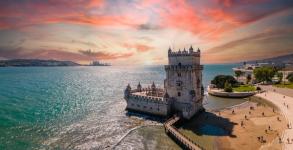
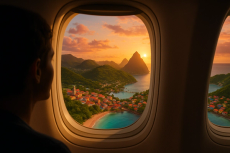
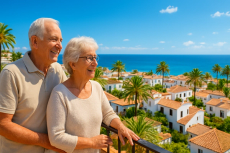



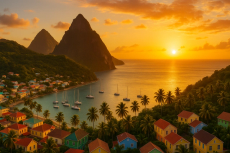
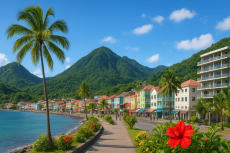
Recently Published



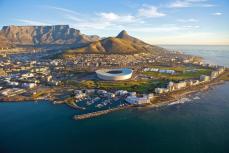

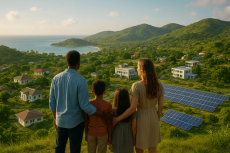
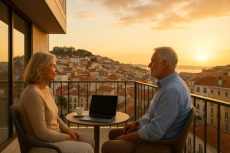
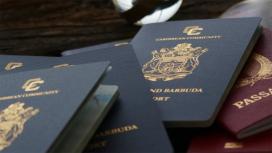
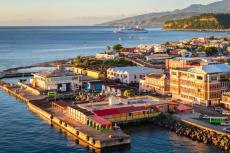
Book a free consultation


